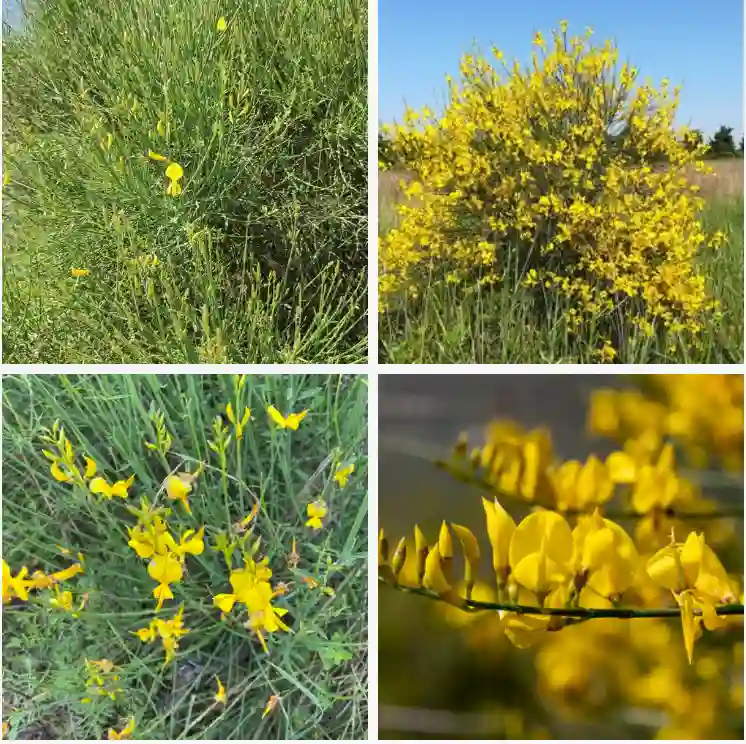FAQs About Houstonia Caerulea
Houstonia Caerulea, commonly known as the Bluet or Quaker Ladies, is a tiny, delicate perennial wildflower. I’ve always found it fascinating due to its charming blue petals and subtle appearance. It’s one of those plants that you stumble upon and immediately feel drawn to, but it’s often overlooked. I’ll share my personal experiences with this plant while answering some frequently asked questions.
24 Species in Genus Houstonia
What is Houstonia Caerulea?
Houstonia Caerulea is a perennial wildflower that belongs to the Rubiaceae family. It’s native to North America, typically found in meadows, open woods, and rocky outcrops. The plant is characterized by its four-petaled, pale blue or violet flowers with yellow centers, which bloom from spring to early summer. Each flower grows atop a slender, wiry stem that can reach about 3-6 inches in height.
Why is Houstonia Caerulea Hard to Find?
In my experience, finding Houstonia Caerulea can be a challenge due to its preference for very specific growing conditions. This plant thrives in well-drained, acidic soils and partially shaded environments, which aren’t as common in many gardens. It’s often found in remote, undisturbed areas, such as forest floors or meadows, where conditions are just right for its growth. Additionally, the flower is small, making it easy to overlook unless you’re specifically searching for it.
Habitat destruction also contributes to its scarcity. As more land is developed or altered for agriculture and urbanization, the natural habitats of Houstonia Caerulea are diminished, which makes finding them in the wild more difficult.
Is Houstonia Caerulea Edible?
This is a question I’ve been asked frequently, and it’s important to clarify that Houstonia Caerulea is not typically considered edible. While it’s not known to be toxic to humans or animals, it has no history of culinary use. Given its tiny size, there’s very little plant material to even consider consuming. I always recommend erring on the side of caution with wild plants unless you’re sure about their edibility.
How to Care for Houstonia Caerulea?
Caring for Houstonia Caerulea requires mimicking its natural habitat as closely as possible. This plant prefers slightly acidic, well-drained soil and thrives in part shade. If you’re planting it in your garden, make sure it has access to morning sunlight with some shade in the afternoon, especially in hotter climates.
It’s a low-maintenance plant once established, but regular watering is crucial, especially during dry periods. It’s not drought-tolerant, so keeping the soil moist is important for healthy growth. Mulching around the base can help retain moisture and prevent weed competition.
How to Propagate Houstonia Caerulea?
In my experience, Houstonia Caerulea can be propagated through both seeds and division. If you’re starting from seeds, it’s best to sow them directly into the garden in the fall, as they require a period of cold stratification. The seeds are small, so be sure to lightly press them into the soil without covering them too much.
For division, I’ve had success by carefully digging up a mature plant and dividing the root clumps in early spring. Each clump should have some healthy roots and shoots to ensure successful re-establishment when planted.
Can You Grow Houstonia Caerulea Indoors?
Growing Houstonia Caerulea indoors isn’t something I would recommend. This plant is highly dependent on outdoor conditions, such as temperature fluctuations and specific lighting that are difficult to replicate indoors. It prefers a more natural environment with cool nights and fresh air, which makes it better suited for gardens or outdoor spaces rather than containers or indoor settings.
What to Plant with Houstonia Caerulea?
Houstonia Caerulea pairs well with other low-growing, shade-loving plants. In my garden, I’ve planted it alongside ferns, violets, and mosses. These plants create a beautiful woodland aesthetic and help maintain the moist, cool conditions that Houstonia Caerulea loves. It’s a great companion for native ground covers or even as an accent in rock gardens.
Is Houstonia Caerulea Toxic?
One of the advantages of Houstonia Caerulea is that it’s not known to be toxic to humans, pets, or wildlife. I’ve always felt comfortable planting it in areas where my pets roam. However, like with any plant, it’s always best to monitor pets or children around unfamiliar flora, just to be safe.
What are the Benefits of Growing Houstonia Caerulea?
Aside from its charming appearance, Houstonia Caerulea can offer several benefits. It attracts pollinators, especially small bees and butterflies, which is always a plus for biodiversity in the garden. I’ve noticed it helps enhance the natural beauty of shaded areas in my yard where other plants struggle to thrive.
Additionally, it requires minimal maintenance once established and doesn’t suffer from many pest issues. If you’re looking for a delicate, native wildflower to add to a naturalistic garden, this plant is an excellent choice.
Common Problems with Houstonia Caerulea
Though Houstonia Caerulea is generally low-maintenance, it does have a few common issues. The most significant problem I’ve encountered is root rot, which occurs when the plant is grown in poorly-draining soil. Ensuring that the soil remains well-drained and not waterlogged is key to preventing this issue.
Another problem could be competition from more aggressive plants. Because of its small size and shallow root system, it can easily be overshadowed by larger, faster-growing plants, so regular weeding or planting in isolated spots is necessary to give it room to thrive.
Compare Houstonia Caerulea with Similar Species
People often confuse Houstonia Caerulea with Houstonia Longifolia or Houstonia Purpurea. While they all share a similar growth habit, Houstonia Longifolia tends to have longer leaves, and Houstonia Purpurea features deeper purple flowers. Personally, I find Houstonia Caerulea’s pale blue flowers more delicate and appealing for garden displays.
Houstonia Caerulea may be small and hard to find, but it’s a gem worth seeking out. It brings beauty, pollinator support, and minimal maintenance to the garden—qualities I always appreciate in a plant.



